Goldfrapp – The MusicTech Interview
There’s been a four-year gap between Goldfrapp’s critically acclaimed Tales Of Us and their recently released seventh album, Silver Eye. Producer and keyboardist Will Gregory opens up on the vintage analogue gear factory that hones their sound and the duo’s perpetual challenge to stay relevant… In 1999, hustling session player Will Gregory was introduced to […]
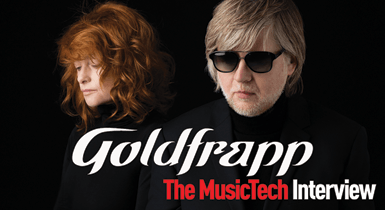
There’s been a four-year gap between Goldfrapp’s critically acclaimed Tales Of Us and their recently released seventh album, Silver Eye. Producer and keyboardist Will Gregory opens up on the vintage analogue gear factory that hones their sound and the duo’s perpetual challenge to stay relevant…
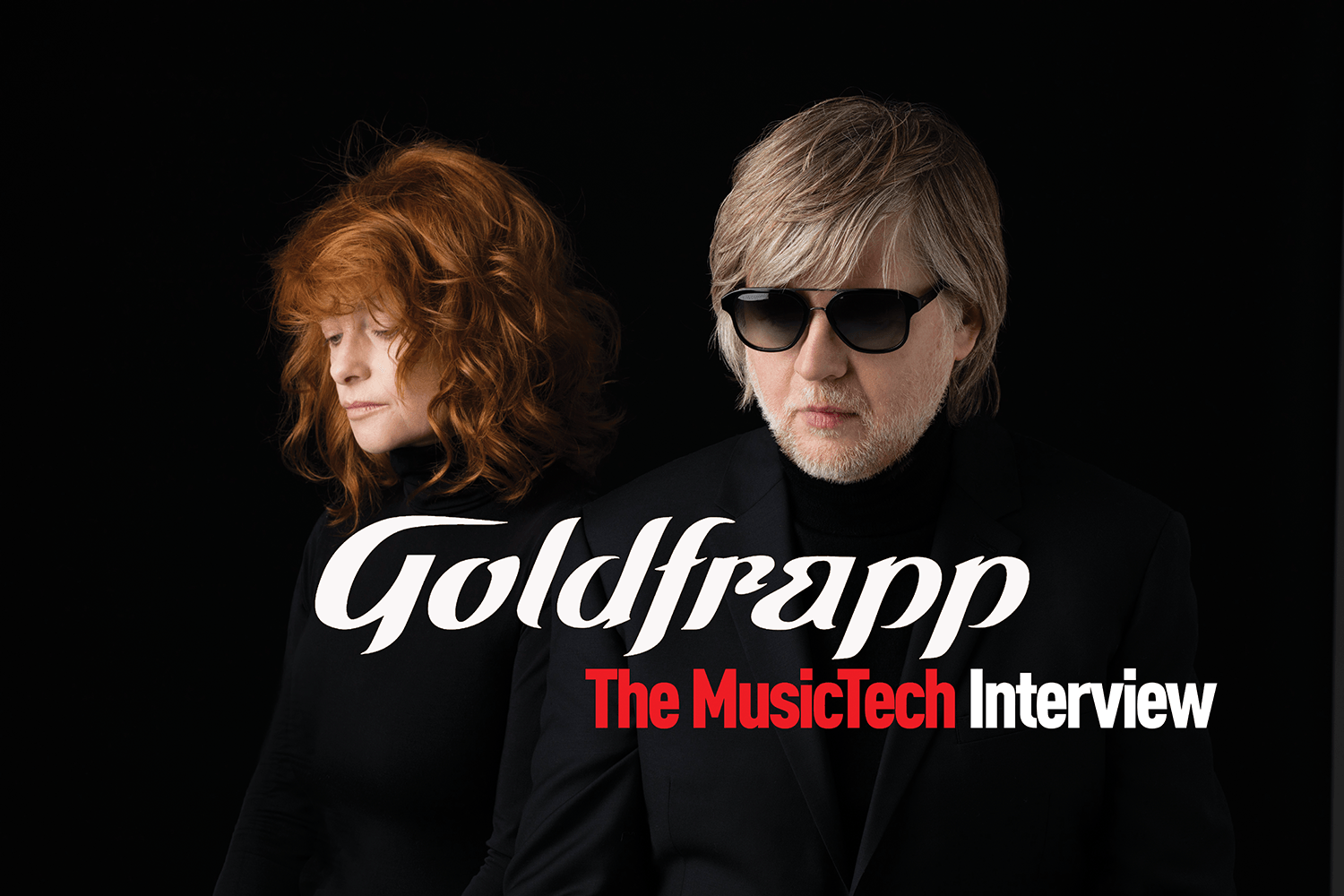
In 1999, hustling session player Will Gregory was introduced to backing vocalist Alison Goldfrapp and the electronic-pop duo Goldfrapp was born. Despite their now cult status, initial albums Felt Mountain and Black Cherry only vaguely registered with the record-buying public. Yet Goldfrapp were merely preparing for lift off and have remained an immovable force in electronic pop ever since.
Behind the scenes, they’ve have had to cleverly manoeuvre through the rise of EDM and the record industry’s digital landscape, while remaining true to the ethos that initially made them relevant. Supernature (2005) successfully planted itself in the dance-music realm, while subsequent albums Seventh Tree (2008) and Tales Of Us (2013) shrewdly adjusted by introducing elements of ambient, downtempo and even folktronica.
After a four-year sabbatical – during which self-confessed vintage gearhead Gregory performed a Moog Ensemble of Wendy Carlos’ groundbreaking work – it was back to the studio to rejoin his longstanding writing partner. On Goldfrapp’s latest album, Silver Eye, Gregory once again mines the analogue realms, while exploiting the benefits of digital technology and collaborations to further expand the duo’s sonic boundaries.
MusicTech: We read that, in the 80s, you recorded and toured with Tears For Fears. How did you get involved in the industry and working with them?
Will Gregory: I was a classical bod, really. I used to play oboe and at county youth orchestras. I went to college at York and got exposed to a fantastic studio there; not by today’s standards, but pretty good at the time. It was a tape-based studio and I spent long periods of time just getting used to the whole thing of flashing lights, dials and knobs.
I went to America for a year, studied jazz and when I came back, I was a good enough sax player to get myself session work. That’s how I met the Tears, because they wanted a sax player. It was at that time in the 80s when everybody had one; it was de rigueur, which was fantastic for me.
We did a couple of big tours and it was great to be around that and see how the whole culture worked. But after playing the sax and doing sessions, I decided I wanted to write. No matter how good a session player you are, you’re not the instigator of what’s happening. The people who were achieving things were the ones writing stuff; otherwise, you’re waiting for the phone to ring. So I got my own little studio together, which was shared with some friends and ended up finding Alison, which was fantastic at that time.
MT: Had you got to the stage of releasing material prior to meeting Alison?
WG: No, not really. I’d done a film score here and there and a TV series, and I did do an album with a funny little band called The Gas Giants. It’s still going actually, just me and a drummer called Tony Orrell. We used to go out and terrorise pubs and clubs in our area. We made a little record ourselves, but never got as far as getting a record deal.
MT: In the 80s, the saxophone was quite a prominent instrument in modern pop music, but now it’s almost absent…
WG: It just sort of had its time. It’s quite a limited instrument in a lot of ways, although you can obviously put it through pedals. In fact, there’s a Bristol band called Get The Blessing, who use a trumpet and sax going through millions of pedals, which takes it into another realm. But as a straight instrument, it just has a lot of baggage. When you think of Gerry Rafferty and The E Street Band, it was in everything, wasn’t it?
MT: Maybe technology is to blame, because it’s cheaper to use digital software and try to emulate some acoustic instruments?
WG: Well, I think that’s possibly true. When I was coming up, if you wanted to get involved in music, you had to play an instrument, get into a rehearsal room with a bunch of people and justify your position there. Now, you can be in a much more virtual place. I don’t think that’s a bad thing: it opens up the world of music-making to people who can’t necessarily afford a saxophone, which is cool, but at the same time, you worry that there’s a whole sea of expertise that is getting neglected, somehow.
Analogue vs digital: round 1
MT: Do you think the fact that so many people use software has guided music in a direction that’s not necessarily for the better?
WG: Somebody said to me early on that anything analogue can be produced digitally; it’s just turning waves into numbers. In theory you can do that, but I think a lot of it is about the interface and how quickly you can get an inspiring thing that is talking to you; one that is yours, and not just some preset that a boffin in Japan spooned up.
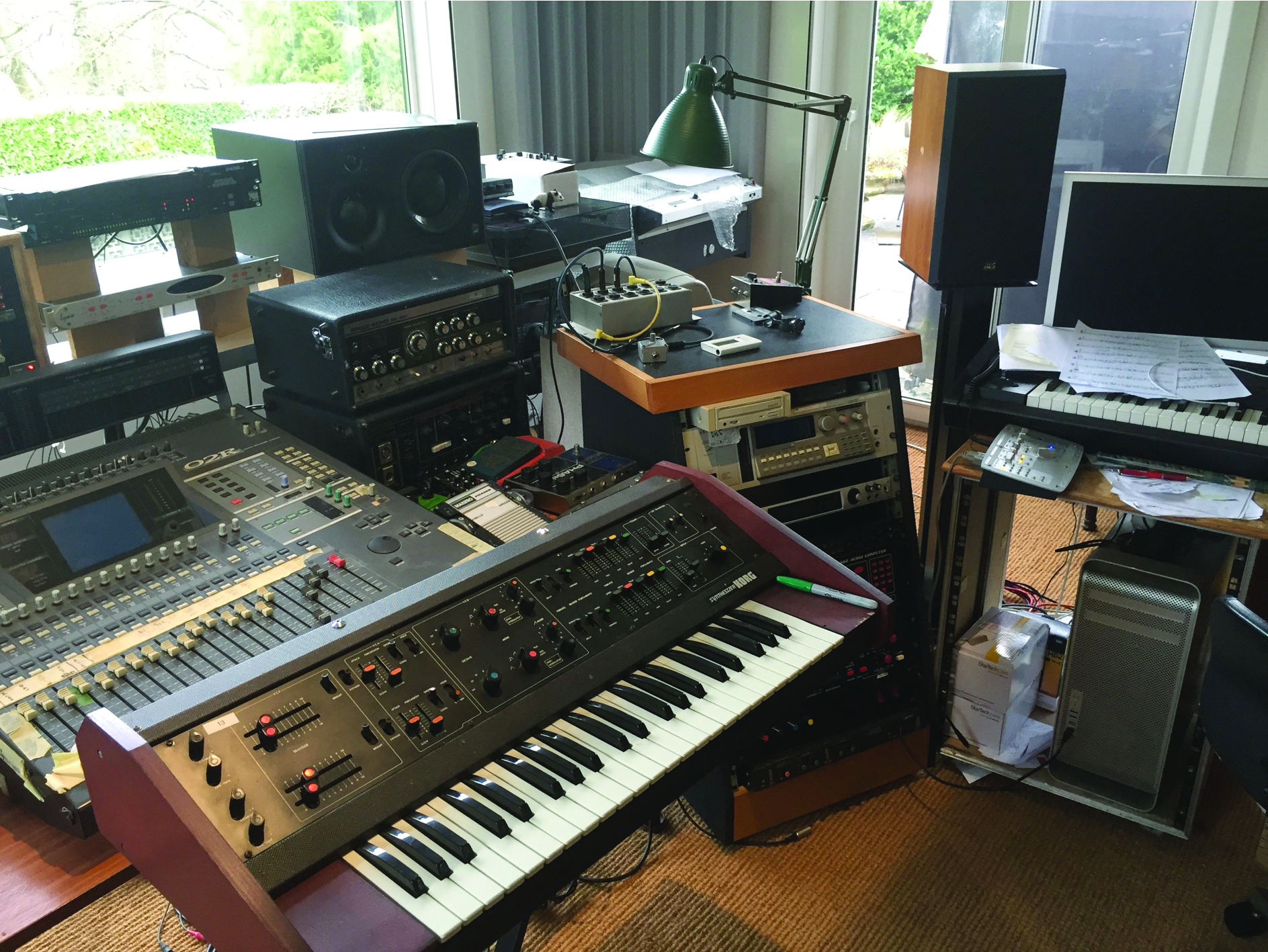
MT: You mentioned converting analogue waves to digital numbers, but what about voltage? Does that introduce unpredictability and a different timbre?
WG: I just don’t think that theory and practice have quite arrived at each other. The theory is correct that you can model any analogue sound digitally, but the fact is, when you zoom in on a waveform produced digitally, it quite quickly turns into little steps, but when you zoom in on an analogue waveform it never does, it just goes on showing you a smooth wave. There is something about that which I find interesting and inspiring, but at the same time, in the last five years, the digital world has caught up.
I know a lot of producers don’t use tape when mastering, because they’ve found at the higher resolutions it doesn’t really sound any different – so the writing is on the wall for tape machines as a mastering format. But having said that, I love tape machines, because I like the way that they don’t perfectly reproduce – and like you say, there’s the randomness of the voltages. I mean if you look at the waveform of a Minimoog and put an oscilloscope on the Square wave, which I have done recently, I don’t know what it is, but it’s not a Square wave… something weird and wonderful is going on.
Lucky seven
MT: Silver Eye is the seventh Goldfrapp album. Does it get harder to find new angles, and what are those driven by?
WG: I think it’s a known that your first album is very hard to follow, because it’s probably taken your whole life to get to that point and now you’ve got all these pressures and exterior forces. If it’s successful, you’ve got to make the second one successful and does that mean you have to make ‘son of album one’ or need to try and find a new angle?
I think we’ve always tried to just entertain ourselves and modestly inspire each other, to keep ourselves interested. But there’s no doubt about it, it does get more difficult as time goes on. Once you’ve explored or mined all those avenues that you know and love and are part of your musical psyche, you’re suddenly back in the mine shaft again.
We’re keen not to repeat ourselves, and I’m sure it’s true of everyone that you don’t want to put music out for the sake of it, so you might as well wait until you’ve got something new to say. I think Alison and I quite often look at each other across the mixing desk and think, ‘Help! What do we do now?’
MT: How much does it help to collaborate? And is that why you do it, to breathe new life into your sound through the contributions of others?
WG: I think so. Anytime you get together with somebody new, there are fantastic opportunities to learn things and get your batteries recharged – even if someone works on a different platform to you.
We were in Dallas with producer John Congleton and he’s got a very direct way of thinking about music. On this record, we felt like it need to be more rhythmic on the drum-programming side, but whenever we get into that territory, we’re not very confident and feel like we need help from someone who knows what they’re doing.
On the first two or three albums, we got Nick Batt in, who came from a DJ culture, and we had Flood producing our fourth album. For this one, we managed to find Haxan Cloak, John Congleton and Leo Abrahams, who’s a brilliant guitar player and programmer. He gave us a bunch of drum loops and we ended up using them on one of the tracks. We also found Andy Savours, who’s another experienced studio bod.
MT: Are there certain tenets that you hold on to when writing, because it’s what the fans expect to hear from a Goldfrapp record?
WG: No, we’re quite selfish, so we’ve never thought about what anybody expects or wants to hear. Apart from anything else, I don’t think you know what your sound is yourself, and if you do, then in some way, you’re probably too knowing. I think we’re quite minimal; we’ve never been a band with a million chord changes.
We also like the idea of getting into a mantra-like repetition of what we’re doing. If you’ve found the right ingredients, then you can repeat it and still feel like you’re getting somewhere, but it’s not anything we’ve thought too deeply about.
The mystery box
MT: What’s the machine you have with the big round dial in the middle?
WG: Well, I made contact with this amazing man called Dan Wilson. He lives near us, in Frome, and is a brilliant synth-repairer enthusiast who rescues lot of people’s gear, which makes it possible to buy some of these things even when they’re a bit bust. He got me turned on to these things made by Brüel & Kjær, a Danish company that makes microphones. Everyone knows B&K mics, but they also made a lot of audio-test equipment that’s now being chucked out by people. So you can still find B&K test equipment, which has oscillators and filters, but it’s so beautifully made and sounds great. The crazy thing is, it’s got voltage-in, so you can control-voltage it around and play it as a synth; you just have to put it through an envelope to get a beautiful-sounding oscillator.
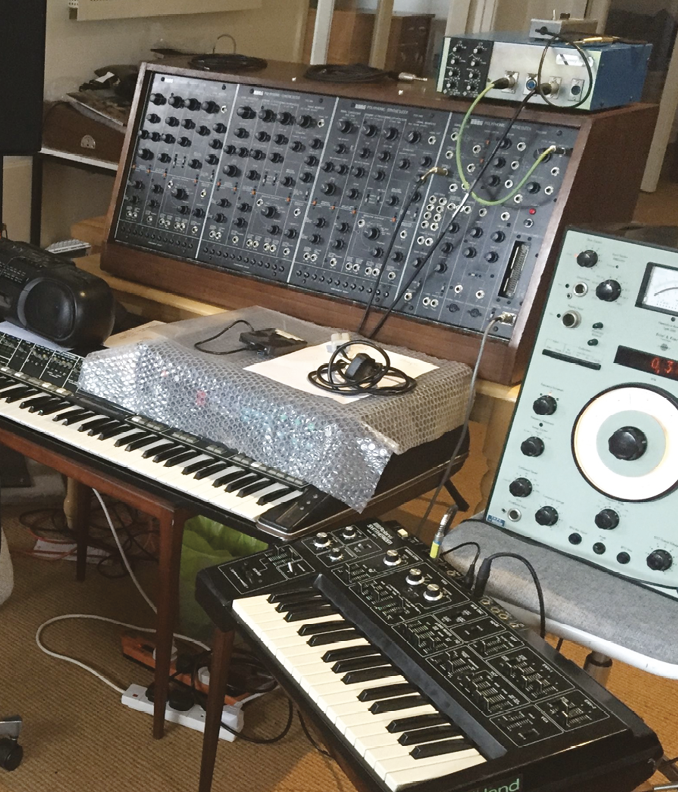
Getting technical
MT: Do you rely on the technology itself to dictate the course of your sound, or always see it as just a tool?
WG: Well, it’s that thing, isn’t it – where does the music stop and the sound begin?I don’t think you can have one without the other and the technology is integrated into that. Obviously, if you’ve found a great plug-in, delay, vocal effect or drum sound then, like we were saying earlier, sound is what you’re immersed in, so if you can find something that feels fresh, that is a technological thing,
MT: We were thinking in terms of how some artists write a song or demo and then use the technology to bring it to life, while others solely use technology to spark the creative process?
WG: For us, it’s more the latter. People have said to us: ‘Oh, why don’t you make sheet music, so people can learn your songs?’, but it doesn’t really translate. Some of it would, those tracks that come from a more acoustic angle, but with a song like Ooh La La, the whole thing is built around the sound of that bass synth and you can’t mug that up, it’s driven by the sound.
When we’re recording, sounds that happen on the first jam will usually end up being on the record, and not only sounds, but vocals, too. That’s what technology allows you to do. The composition, arrangement, demo and finished product are all wrapped up in the same bundle, and maybe it wasn’t like that 20 years ago.
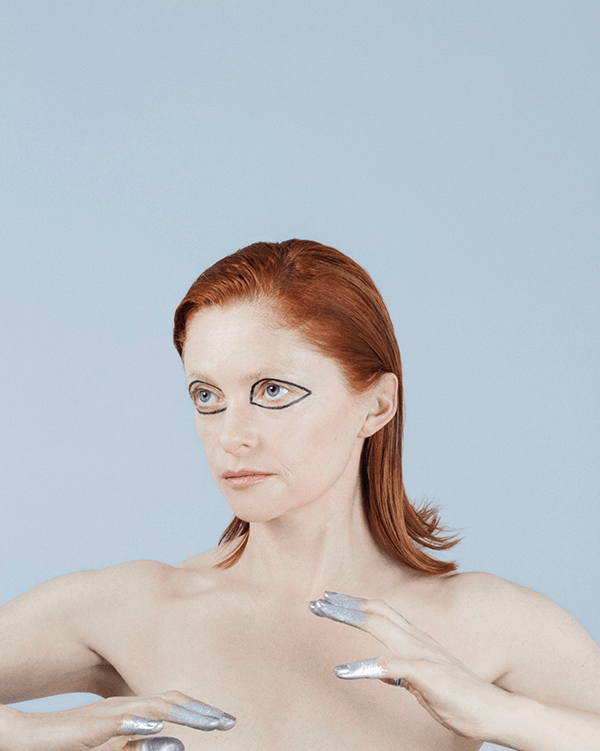
MT: What part does software play in your studio setup?
WG: Ever since the Atari Cubase days, I’ve been on Logic. I don’t think I’m that good at using different software DAWs, even learning Logic was painful. I haven’t got time to do that – my brain’s just not clever enough to get across all these platforms. A lot of people seem to be able to do Ableton, Pro Tools, Logic or Reaper, but as soon as I get a sound up on any one of them, I’m away with the fairies. It’s about the music, isn’t it? Logic does pretty much everything in its own sweet way, and it’s whatever you know.
I don’t really use the Logic sounds at all, but I use some of the plug-ins because they’re quite good. There are a couple of soft synths in there that are very good actually, particularly the ES1 – even though there’s nothing on it, it’s just an oscillator, a filter and an envelope, but because it’s so simple, it sounds big.
Far away
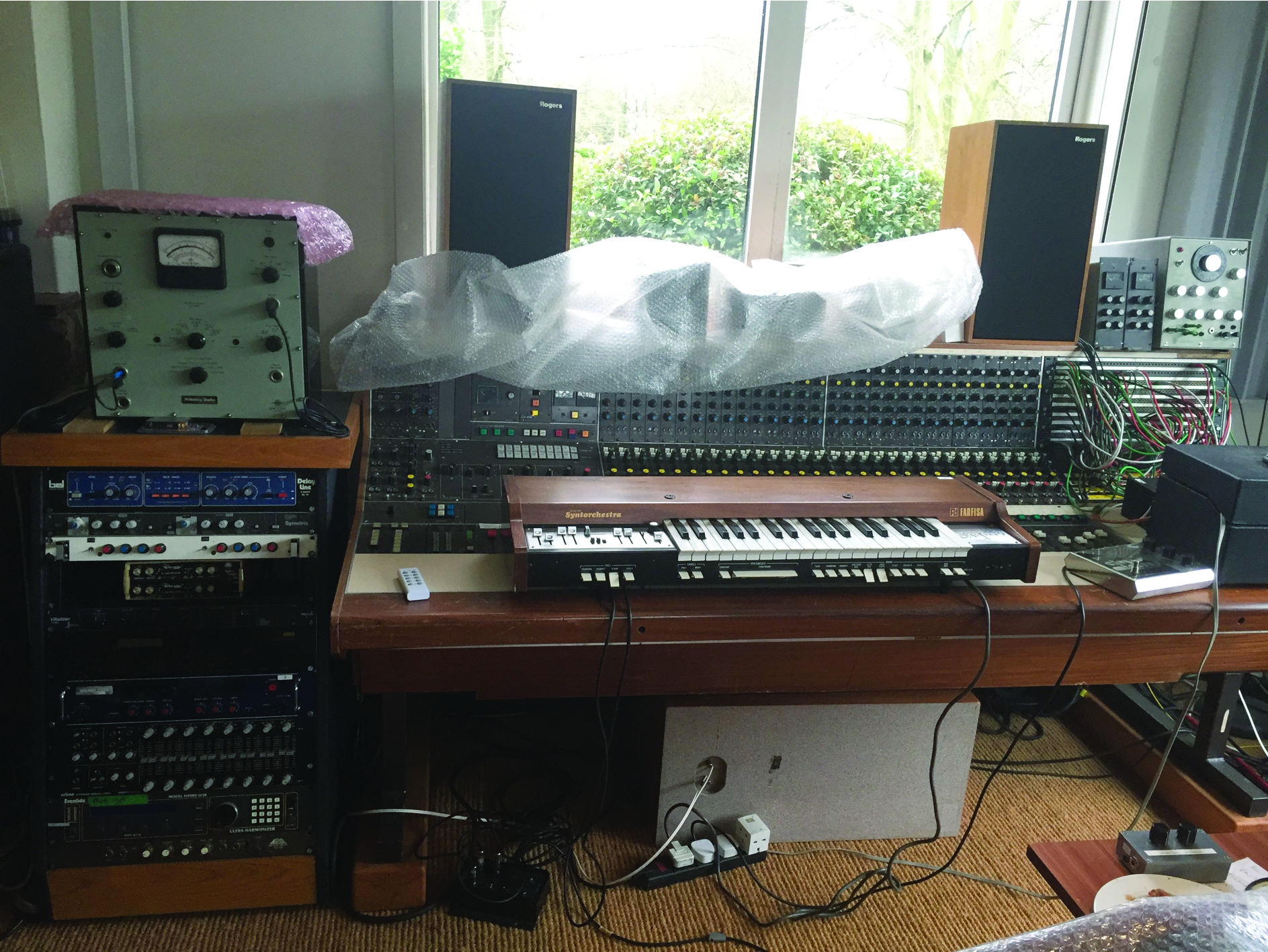
MT: Tell us more about your Farfisa Synthorchestra…
WG: It’s very primitive and slightly broken, so sometimes, when you trigger the keys, the voices burble a bit. Again, it’s trying to be both polyphonic and monophonic, but there’s something about the way it can’t quite do that which is very nice. I think it comes from those days when they expected people in hotel lobbies to play lounge music, but Farfisa is an amazing company – their organs are fab!
Analogue vs digital: round 2
MT: Have you toyed with virtual instruments and, if so, do you find them in any way comparable to the real thing?
WG: Well, although I’m a synth nut, I’m not on any particular bandwagon. I think sounds are important and inspiring and I’m not into this idea of replacing a rubbish sound later with a better one. You need a good sound and whatever gets you there is cool. Plug-ins are incredible, aren’t they? You can sit on a train and play a CS-80, which obviously weighs half a ton. I tend to use both.
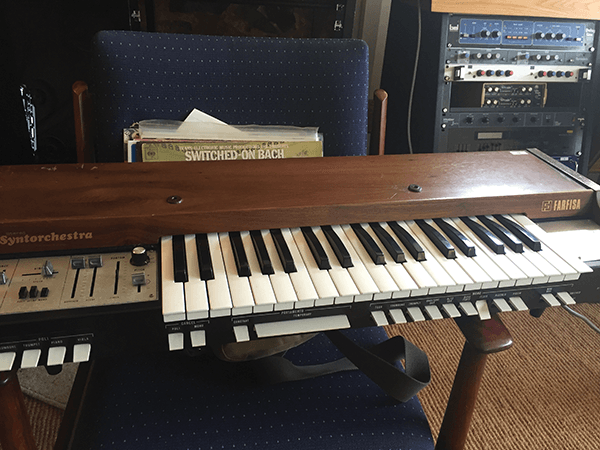
MT: To our ears, the sound of the album has analogue origins rather than digital. We presume that’s the case in terms of the gear you use?
WG: Yeah, it’s not about being a purist, it’s to do with the fact that when you can grab hold of gear and get your hands on the knobs and the interface, it’s just much more satisfying. It brings out the performance side of music, whereas if you’re sitting there clicking a mouse and incrementally filtering things, I don’t know… don’t do that, just turn a knob and wiggle it around.
Inspiration and collaboration
MT: How has your approach to working with Alison changed since you first started working together?
WG: We obviously know each other a lot better and know what we might think about things, but beyond that, I don’t think it’s really changed. There’s always the frustration of not knowing what you’re doing and I think we’ve got bit more used to that. That’s the scary part – when you’re wandering around in complete ignorance about what it is you’re trying to achieve and how you’re trying to achieve it.
MT: That’s probably quite reassuring to know, for anyone who struggles with creativity…
WG: As with any artform, when you’re dealing with the blank page, you just have to be very brave and confident that it’s going to get filled up at some point. When you don’t know what it is, what you’re doing or why you’re doing it, that’s just Situation Normal [laughs], so you just deal with it.
I remember reading an interview with ABBA where they said they spent most of their time sitting outside the cave waiting for the dragon to come out, and most of the time, it didn’t. I totally related to that, but as long as you’re there putting the time in, it will come out eventually.
MT: Do people assume that moments of magic are inspirational, when it’s more likely down to hard work?
WG: I think it is, and that applies to everyone. I get inspired hearing those kinds of stories, because it’s a scary business. I also remember reading about Burt Bacharach, who split up with his second wife over whether they should use a quaver or an upbeat on one of the songs, and you just think, right, they got to the point where they actually had to divorce because they couldn’t decide. Then you read about things like The Beach Boys’ Good Vibrations and Jerry Dammers’ Ghost Town, which both took six months to make – and you think, well that was six months worth spending. Just because it doesn’t come easily, doesn’t mean to say it’s wrong.
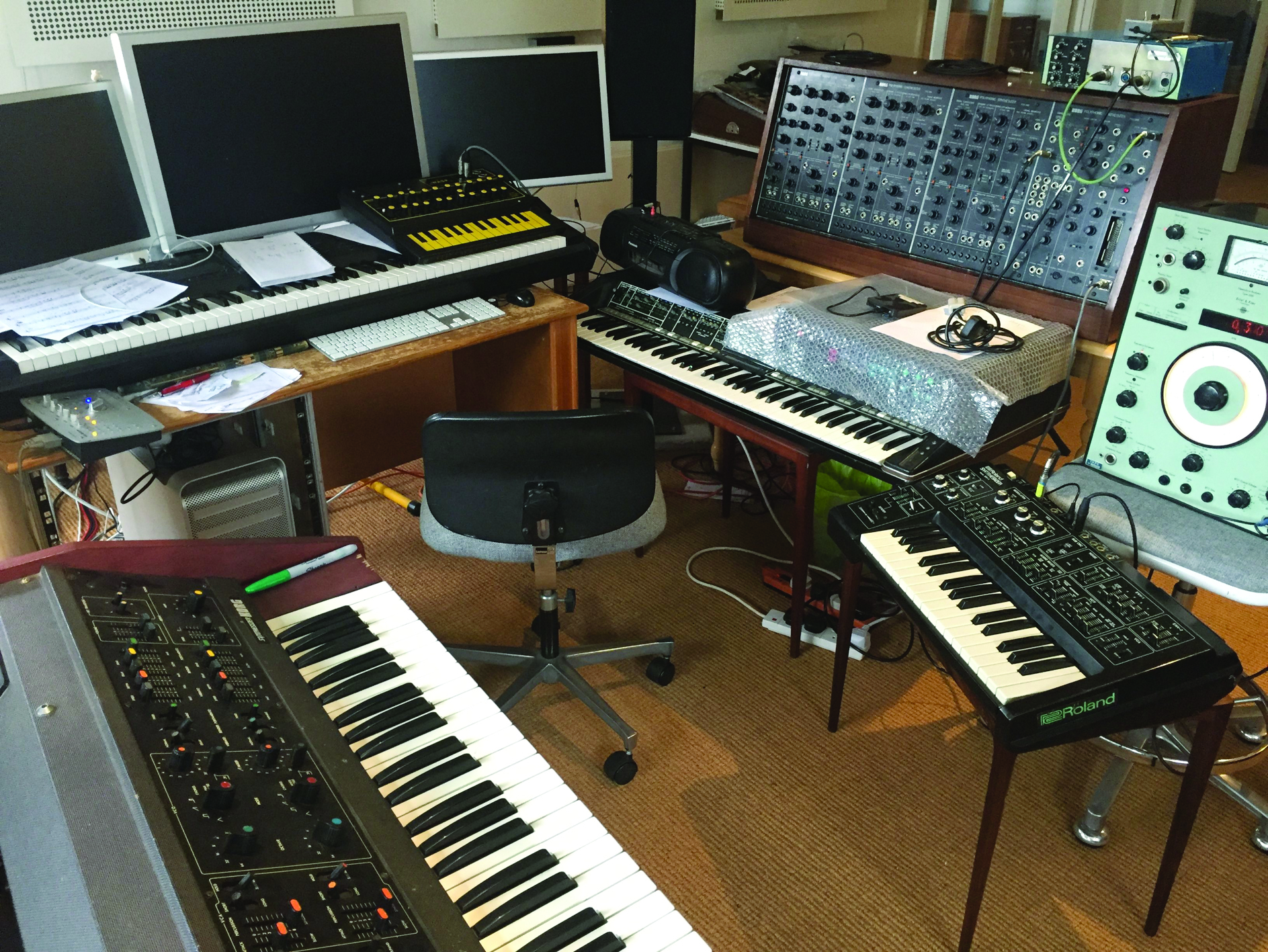
MT: At what point in the process do Alison’s lyrics inform the direction of the music?
WG: With us, it tends to be more towards then end. In the ‘improvising’ phase, which is the bulk of the work, words tend to be just sounds… and then they crystallise
at various stages in the cooking process. Normally, neither of us knows what the songs are about, and it’s very much written from music, it’s not conceptual in terms of them being about a political situation.
MT: How much is to do with the fun aspect and being playful?
WG: That’s how I see it, but then I come from being a playing musician. I’m used to playing the sound and being connected to it in a very direct way. When you blow down a horn, it’s connected to you. But I can see how people come to music from a much more cerebral angle. DJs, for example, might really get off on the idea that they’ve gone into the computer, programmed these very specific events and when they press play, it all comes out and they go ‘Whoopee’, so I’m not saying that’s wrong.
MT: You mentioned working with producer John Congleton – at what point of the project was he brought on board?
WG: I think he was reluctant to get involved, initially, because more often than not he doesn’t come in to a project at a late stage; he’s there at the inception and shapes it all along. So he said to us, “Look, guys, I’ve not really done this before, so it’s a bit of an experiment.” But I think it was a really valid experiment, because he threw stuff up in the air and made us try things in different ways.
We went over to see him one month before we were due to start mixing, so the album was as finished as an album was ever going to be before mixing – and he struggled to derail us as much as he wanted [laughs]. At the same time, in a couple of cases, he was really helpful and it was great to have him rough things up a bit.
MT: We read a quote where you said you never quite know when to stop working on a track, so how do you?
WG: There are a few things you’ve got to look out for. One is when the track starts to get worse, so it’s worth keeping previous versions and checking back, because sometimes Mix Two sounded great and you took the best bit out! So, I think it’s a combination of letting time help to evolve a track, but not letting time help it unravel.
Will’s synths
MT: The Roland Vocoder Plus looks an interesting synth?
WG: With that generation of Roland stuff, they did something called the Paraphonic RS-505 and there’s also the Jupiter-4, which looks like that, too. They’re all gorgeous, warm things. It’s not the best vocoder, but I think it’s what Laurie Anderson used to make O Superman. With a vocoder, you’ve got excitation, which is the mic; then you’ve got the source, which is a range of vocal presets or synth voices, including choir sounds. But it’s also got an external-in, so you could play your own synth sound into it and vocode that.
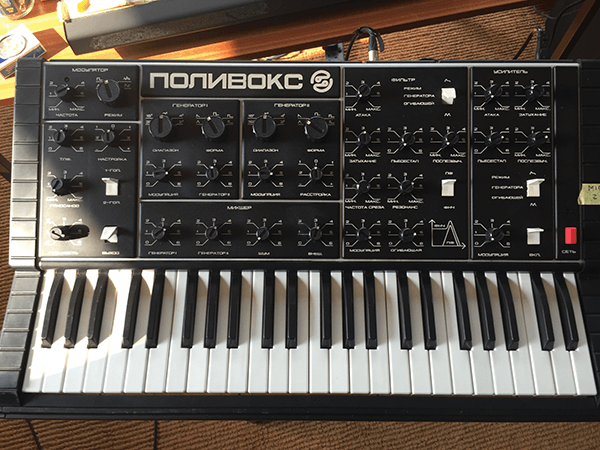
MT: What other synths are you using?
WG: There’s the Polivox, which is a Russian synth and a Yamaha CS-50, because I can’t afford the CS-80. The CS-50 is half a CS-80, so it’s only got four voices, but if you doubletrack it, it will be a CS-80 [laughs]. For people like me who can’t afford a CS-80, the CS-50 and CS-60 are fantastic. They sound incredible; the low-end on them is unbelievably huge. There’s even a CS-1, which is a toy-like thing, and that sounds pretty good, too.
In the next part of our interview, Will Gregory gives us the low down on his main pieces of vintage modular gear. Click here to continue